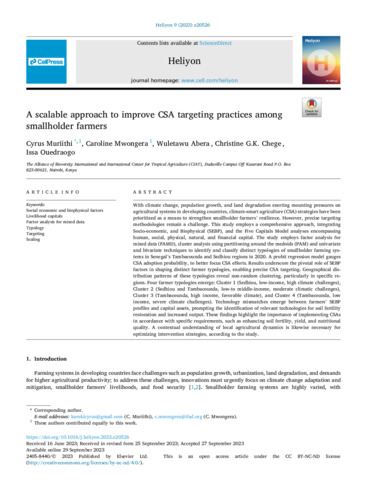A scalable approach to improve CSA targeting practices among smallholder farmers
With climate change, population growth, and land degradation exerting mounting pressures on agricultural systems in developing countries, climate-smart agriculture (CSA) strategies have been prioritized as a means to strengthen smallholder farmers' resilience. However, precise targeting methodologies remain a challenge. This study employs a comprehensive approach, integrating Socio-economic, and Biophysical (SEBP), and the Five Capitals Model analyses encompassing human, social, physical, natural, and financial capital. The study employs factor analysis for mixed data (FAMD), cluster analysis using partitioning around the medoids (PAM) and univariate and bivariate techniques to identify and classify distinct typologies of smallholder farming systems in Senegal's Tambacounda and Sedhiou regions in 2020. A probit regression model gauges CSA adoption probability, to better focus CSA efforts. Results underscore the pivotal role of SEBP factors in shaping distinct farmer typologies, enabling precise CSA targeting. Geographical distribution patterns of these typologies reveal non-random clustering, particularly in specific regions. Four farmer typologies emerge: Cluster 1 (Sedhiou, low-income, high climate challenges), Cluster 2 (Sedhiou and Tambacounda, low-to middle-income, moderate climatic challenges), Cluster 3 (Tambacounda, high income, favorable climate), and Cluster 4 (Tambacounda, low income, severe climate challenges). Technology mismatches emerge between farmers' SEBP profiles and capital assets, prompting the identification of relevant technologies for soil fertility restoration and increased output. These findings highlight the importance of implementing CSAs in accordance with specific requirements, such as enhancing soil fertility, yield, and nutritional quality. A contextual understanding of local agricultural dynamics is likewise necessary for optimizing intervention strategies, according to the study.

